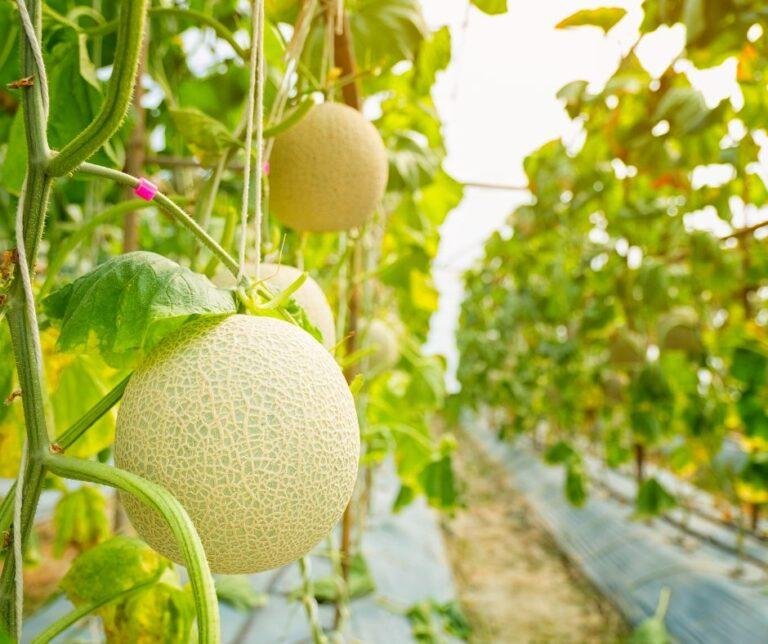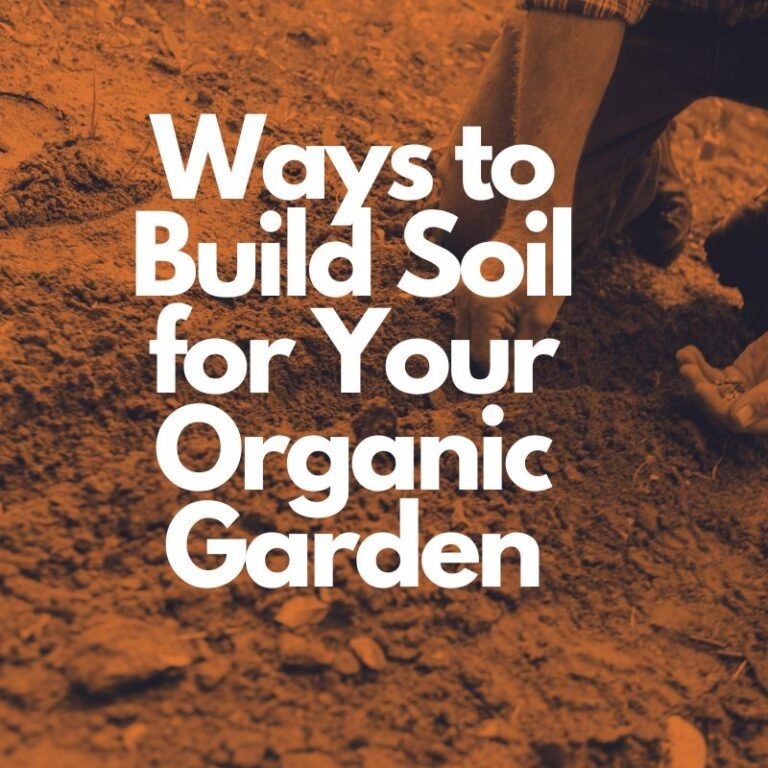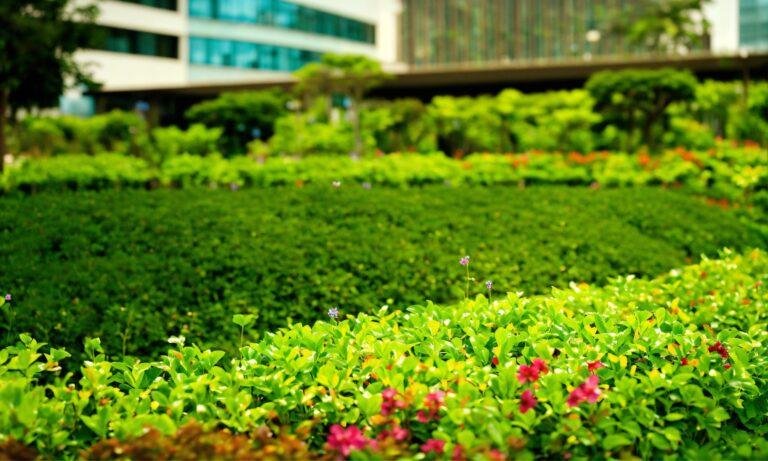What is Hotbed Gardening?
Hotbed gardening is an innovative method of cultivating plants that utilizes a heat-absorbing system to create an ideal growth environment. This technique specifically employs the heat generated from decomposing organic materials, such as manure or compost, which is pivotal in providing warmth to the soil. Dating back to ancient horticultural practices, hotbeds have been used for centuries to extend growing seasons and facilitate the early germination of plants, particularly in colder climates.

At its core, hotbed gardening involves constructing a raised bed filled with layers of organic matter. As the materials break down, they produce heat, which warms the soil and, in turn, nurtures the plants growing within it. This method is particularly advantageous for gardeners aiming to sow seeds or transplant seedlings earlier in the year than would typically be possible with traditional gardening practices. The controlled, warm environment of a hotbed allows for more extended periods of growth, thereby increasing yields and enhancing the overall productivity of a garden.
Historically, the roots of hotbed gardening can be traced back to the practices of early gardeners who sought to maximize food production, especially in regions with short growing seasons. By harnessing natural processes, they were able to initiate plant growth ahead of the natural cycle, ensuring crops were ready to harvest sooner. Furthermore, hotbeds are not confined to a specific type of plant; they are versatile enough to support a variety of vegetables, herbs, and even flowers throughout the year.
This method of gardening is not only effective for extending the growing season but also promotes sustainable practices, as it encourages recycling and repurposing organic materials. Overall, hotbed gardening represents a productive approach to food cultivation, making it an appealing option for anyone interested in growing their own fresh produce year-round.
Benefits of Hotbed Gardening
Hotbed gardening presents numerous advantages for both novice and seasoned gardeners. One of the primary benefits is the ability to extend the growing season, allowing for plants to flourish earlier in the year. By harnessing the natural heat generated from decomposing organic materials, hotbeds create an environment that is conducive to seed germination and plant growth even before the last frost has passed. This means that gardeners can enjoy a head start on their favorite vegetables, herbs, and flowers.
Furthermore, hotbed gardening is often viewed as a cost-effective technique. Gardeners can cultivate a wide variety of plants, leading to significant savings on purchasing produce. This method utilizes materials that are often readily available, such as compost, straw, and manure. By incorporating these locally-sourced organic materials, the need for commercial fertilizers is reduced, thereby enhancing the cost efficiency of hotbed gardening practices.
In addition to financial benefits, hotbed gardening promotes sustainable practices. It encourages the reuse of waste materials, effectively reducing the overall volume of organic waste that ends up in landfills. By utilizing composting techniques, gardeners can turn kitchen scraps and yard waste into valuable resources for their plants. This not only leads to healthier gardens but also contributes positively to the environment.
Moreover, hotbed gardening plays a role in reducing one’s carbon footprint. By growing food at home, gardeners minimize the reliance on store-bought produce that often requires extensive transportation, packaging, and refrigeration. This local approach to food production decreases greenhouse gas emissions and fosters a greater connection to one’s food source.
In conclusion, the myriad benefits of hotbed gardening highlight its effectiveness as a method for growing food year-round. From cost savings and environmental sustainability to extended growing seasons, hotbed gardening is an invaluable practice for those looking to enhance both their gardens and ecological footprint.
Materials Needed for Building a Hotbed
Creating a successful hotbed gardening system requires careful selection of materials that will ensure optimal conditions for plant growth. The first step is to choose the right location. Ideally, the hotbed should be placed in an area that receives ample sunlight, with protection from harsh winds. An area that gets at least six hours of sun exposure daily is ideal for maximizing the heat generated by the composting materials.
For the structural frame of the hotbed, various materials can be utilized. Wooden structures are popular due to their accessibility and ease of construction. It’s advisable to use untreated wood to avoid chemical leaching into the soil. Alternatively, brick or stone can be effective choices for creating a more permanent and aesthetically pleasing hotbed. Regardless of the material chosen, ensure that the frame is sturdy enough to withstand temperature fluctuations and moisture from the surrounding environment.
Next, the selection of organic materials for heating is crucial. Traditional hotbed gardening relies on a mixture of fresh manure, straw, and leaves to generate heat through decomposition. Horse manure is often preferred due to its high nitrogen content, which accelerates the heating process. It’s essential to layer these materials properly; start with a base of coarse materials like branches or straw to facilitate drainage, followed by layers of manure and compost. This layering will create an effective heat source that can warm the soil above.
Before embarking on your hotbed gardening project, consider safety and sustainability. Use materials that are free from pesticides and chemicals to ensure that your growing space remains safe for food production. Additionally, sourcing organic materials locally can reduce your ecological footprint and support sustainable practices. In conclusion, with the right materials and careful planning, your hotbed can become a valuable asset in your year-round gardening efforts.
How to Construct a Hotbed: Step-by-Step Guide
Creating a hotbed gardening system involves a series of carefully planned steps to ensure that the environment is conducive to plant growth. Begin by selecting an appropriate location that receives ample sunlight but is sheltered from harsh winds. Ideally, this site should have good drainage to prevent waterlogged conditions. Once your site is chosen, it’s time to assemble the frame, which can be made from wood, bricks, or other sturdy materials. The frame should be at least two feet tall to accommodate the organic materials and allow for proper insulation.
After constructing your frame, the next step is layering organic materials. Start with a layer of coarse materials like straw or wood chips at the bottom, which helps with drainage. This should be followed by layers of more nutrient-rich organic matter like manure and compost. Each layer should be about six inches thick. Maintaining a balance of carbon-rich and nitrogen-rich materials is essential for optimal heat generation within the hotbed gardening setup. Once your hotbed is filled with these layers, gently pack them down to eliminate air pockets, allowing for efficient decomposition.
Monitoring the temperature in your hotbed is crucial. The decomposition process generates heat, and you should aim for a temperature of around 130°F to 160°F. Utilize a soil thermometer to check the internal temperature regularly. If the temperature exceeds this range, turn the contents to aerate them, which helps to lower the temperature while promoting further decomposition. To ensure that air circulation remains adequate, do not compact the materials excessively. Furthermore, pay attention to moisture levels, as the organic materials should be damp but not soggy.
By following these steps, you will create an effective hotbed gardening system that can support healthy plant growth throughout the year. The right setup will not only provide warmth but also enrich the soil, making it a valuable addition to your gardening efforts.
Choosing Plants for Your Hotbed
When embarking on the rewarding journey of hotbed gardening, it is crucial to select plants that will thrive in the warmer environment that a hotbed provides. The primary advantage of hotbed gardening is the extended growing season, which allows for the cultivation of a wide variety of vegetables, herbs, and flowers. Optimal plant choices can enhance not only growth rates but also yield and nutritional benefits.
Among the vegetables well-suited for hotbed gardening, leafy greens such as spinach, lettuce, and kale are ideal. These crops flourish in cooler conditions and benefit from the consistent warmth offered by a hotbed. Root vegetables like radishes and carrots can also thrive, gaining an early start before the ground warms in spring. Additionally, faster-growing crops such as bush beans and snap peas are excellent choices due to their short maturity times.
Herbs, too, play a significant role in hotbed gardening. Basil, cilantro, and parsley are popular selections, as they tend to thrive in these enriched conditions, encouraging robust flavor profiles. Flowering plants such as pansies and marigolds can be added to your hotbed for an aesthetic appeal, supporting beneficial insects and enhancing biodiversity in your garden space.
When considering companion planting, select combinations that maximize growth potential and deter pests. For example, pairing tomatoes with basil not only improves the flavor of tomatoes but also helps to ward off certain insects. Furthermore, crop rotation is vital in maintaining soil health and reducing disease occurrence. By interchanging the location of your plants each season, you enhance soil nutrient availability and promote a sustainable gardening practice. Ultimately, choosing the right plants for your hotbed can lead to a productive and thriving garden, providing nourishment throughout the year.
Maintaining Your Hotbed: Tips and Best Practices
Maintaining a hotbed requires diligence and attention to detail to ensure optimal conditions for plant growth. One of the critical aspects of hotbed gardening is monitoring temperature levels. Ideally, the temperature within the hotbed should remain between 60°F and 75°F, depending on the specific crops being cultivated. Utilizing a reliable thermometer, you can regularly check the internal temperature, making adjustments by ventilating or adding insulation as necessary. This practice not only ensures that your hotbed remains a conducive environment for seedlings but also assists in preventing overheating or chilling that could harm your plants.
Moisture management is another vital element for a thriving hotbed. The soil should be kept consistently moist but not overly saturated. An effective strategy involves using a moisture meter or gauging with your hands to check the soil’s dampness. If the soil appears dry several inches below the surface, it may be time to water your hotbed. A well-maintained moisture level prevents damping off, a common disease that affects seedlings under excessive moisture conditions.
Natural pest management is paramount in ensuring the health of your crops. Regular monitoring allows you to spot any early signs of pest infestations. Utilizing beneficial insects like ladybugs or introducing natural repellents can help manage pests more sustainably than chemical alternatives. Additionally, incorporating companion planting can bolster your hotbed’s defenses, fostering a balanced ecosystem. Lastly, replenishing organic materials in your hotbed is essential for providing vital nutrients. Periodically adding compost or well-rotted manure can revitalize the soil and enhance its structure, contributing to the health and growth of your plants.
In conclusion, maintaining your hotbed involves a multifaceted approach that includes temperature and moisture control, natural pest management, and the replenishment of organic materials. Regular checks and proactive measures will lead to a bountiful year-round harvest, solidifying your success in hotbed gardening.
Hotbed Gardening in Different Climates
Hotbed gardening offers a flexible solution for gardeners wishing to cultivate plants throughout the year, regardless of their geographic region. The adaptability of this method enables effective growth in varying climate zones, from frigid northern climates to scorching southern areas. Understanding the specific challenges presented by different climates can enhance your ability to maximize the benefits of hotbed gardening.
In colder climates, where low temperatures can hinder plant growth, utilizing additional insulation techniques is crucial. For instance, layering the hotbed with materials such as straw, hay, or even old blankets can provide necessary warmth and minimize heat loss. Covering the hotbed with a sturdy, transparent cover can also trap heat and light while protecting plants from freezing temperatures. Moreover, incorporating thermal mass, such as water barrels or stones, can help mitigate temperature fluctuations, ensuring a stable environment for seedlings and other plants.
Conversely, in warmer climates, managing moisture and ventilation becomes paramount to prevent overheating in hotbed gardening setups. Proper ventilation is essential to allow excess heat to escape, which can otherwise lead to a decline in plant health. Creating adjustable vents or strategically positioning your hotbed in shaded areas can help regulate temperature effectively. Additionally, using well-draining materials in the hotbed construction promotes moisture retention while preventing the plants from becoming waterlogged in humid conditions.
By customizing hotbed gardening techniques to suit local climate conditions, gardeners can improve their chances of success and secure a bountiful harvest year-round. Whether dealing with frost or sizzling heat, the adaptability of hotbed gardening provides a viable solution for growing food in diverse environments.
Success Stories: Case Studies of Hotbed Gardeners
Hotbed gardening has gained popularity as a method to cultivate plants year-round, allowing gardeners to extend their growing seasons and yield fresh produce regardless of external weather conditions. Several successful hotbed gardeners have harnessed this innovative technique, and their experiences provide insightful lessons for new enthusiasts.
One notable case is that of a community garden in a temperate climate, where gardeners faced numerous challenges, including limited sunlight during the winter months. The team constructed a hotbed using recycled materials, incorporating a layered structure of organic matter such as manure and straw. This approach generated heat and allowed them to germinate seedlings earlier in the season. As a result, they successfully harvested a variety of vegetables, including spinach and lettuce, months ahead of traditional planting times.
Similarly, a family in the Midwest utilized hotbed gardening within a compact backyard, which posed space constraints. They optimized their garden layout by building multiple cold frames, each acting as a mini hotbed. By carefully monitoring the internal temperatures and adjusting the coverings as needed, they were able to grow strawberries and herbs throughout the winter. Their story exemplifies that even limited space does not preclude the possibility of enjoying fresh produce year-round.
In another inspiring example, a retiree adopted hotbed gardening as a means to promote sustainability and reduce food mileage. By creating a series of connected hotbeds, they were able to grow a diverse range of crops, from carrots to heirloom tomatoes, while integrating composting practices. This project not only supplied the gardener with fresh ingredients but also served as a model of sustainable food production for the community.
These success stories reflect the adaptability and resourcefulness inherent in hotbed gardening. They illustrate how challenges can be transformed into opportunities through creative solutions, motivating aspiring gardeners to embark on their own journeys in cultivating food sustainably throughout the year.
Conclusion: Embrace Hotbed Gardening Today!
Hotbed gardening presents a unique and productive approach to cultivating food throughout the year, making it an invaluable technique for both novice and experienced gardeners. This method not only allows for extended growing seasons, but it also enables individuals to produce fresh vegetables and herbs despite external weather conditions, thereby promoting food security and sustainability. By utilizing the inherent heat generated from composting materials, hotbed gardening transforms a simple plot of land into a vibrant, life-supporting environment. This practice fosters a deep connection to nature and an appreciation for the food production process.
Furthermore, embracing hotbed gardening encourages gardeners to adopt eco-friendly practices. The method makes efficient use of organic waste, thereby reducing the need for synthetic fertilizers while enhancing soil health. This approach aligns with the growing trend towards sustainable living, highlighting the importance of making mindful choices to protect our environment. Additionally, hotbed gardening can significantly reduce the carbon footprint associated with transporting food, as it allows individuals to grow food right in their backyards or community spaces.
The joys of hotbed gardening extend beyond individual benefits. Engaging in this technique can establish a sense of community among gardeners, as sharing experiences and tips can enhance collective knowledge and foster camaraderie. Encouraging others to explore hotbed gardening can spark meaningful conversations and collaborations, ultimately enriching local food systems. By inviting friends and family to partake in the joys of growing food, gardeners cultivate not only plants but also relationships.
In conclusion, the rewards of hotbed gardening are manifold, encompassing personal fulfillment, environmental stewardship, and community engagement. It is an opportunity for individuals to take ownership of their food sources and contribute positively to their surroundings. Therefore, consider adopting hotbed gardening practices and share your experiences with others, as every contribution helps weave a stronger tapestry of sustainable living.
- The Art and Science of Sacred Gardening: Cultivating a Spiritual Oasis
- The Ultimate Guide to Organic Gardening Magazines: Cultivating Knowledge and Inspiration
- Gardening by Moonlight: Unlocking the Magic of Lunar Cultivation
- Ohana Gardening: Cultivating Connections and Sustainability in Your Backyard
- Creating Engaging Gardening Lesson Plans for Students
Discover more from Gardening with Ecorganicas-Source for Organic Gardening Tips
Subscribe to get the latest posts sent to your email.








